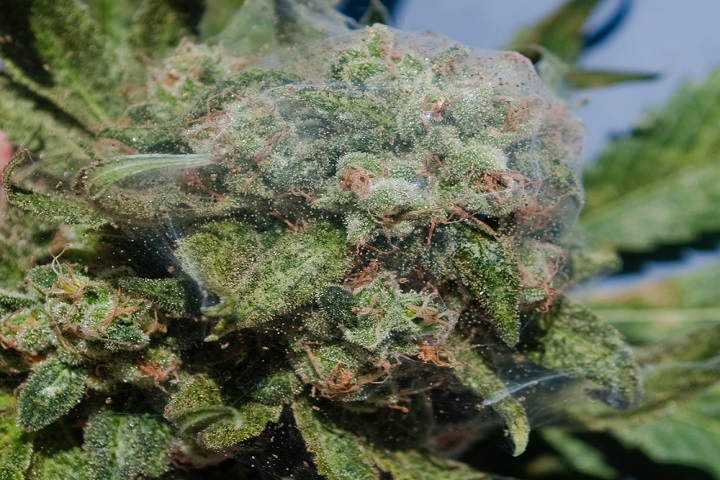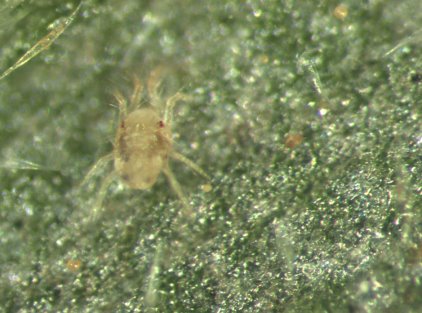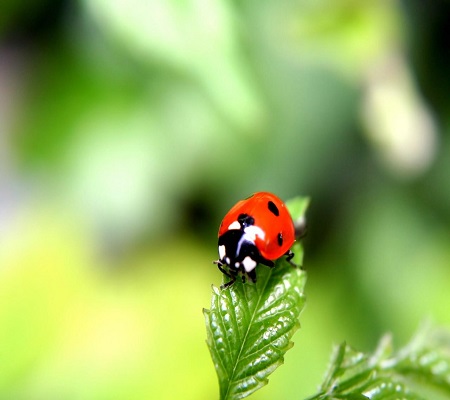
Spider Mites And Your Marijuana Plants
Spider mites are not insects; they arachnids with eight legs and no antennae, such as ticks or other species of mites. Their name comes from the fact that they actually leave a web of sorts on your plants when they have invaded.
Spider mites reproduce at a shockingly rapid rate. Within just eight days of the new eggs being laid, an entirely new population of sexually mature (and therefore reproducing) mites will be running rampant on your marijuana plants. Millions of eggs can come from only one female mite within just a month, so a few mites turn into a big problem extremely quickly.
Spider mites use their teeth to bite into your marijuana plants and suck out the chlorophyll within. One spider mite will do no noticeable damage; millions of spider mites will devastate your marijuana garden. They usually appear in soil-based systems because of the high amount of dead organic matter contained within, but sometimes they also show up in hydroponics systems or other ones as well. In other words, no garden (marijuana or otherwise) is completely safe from spider mites.
Download my free marijuana grow guide and learn to grow like a pro!
If the spider mite invasion is particularly severe, a plant could literally die in just one day. You, therefore, need to eradicate them immediately -- which is, of course, easier said than done. Spider mites are hardy, adaptable creatures that are able to adapt any of the methods you decide to use against them. Only a few spider mites left alive could cause a second swell of immune spider mites, requiring you to find a new method and try again. “The Borg,” or two-spotted spider mites, are notorious for this adaptability and their particular preference to consume chlorophyll from marijuana rather than other types of plants.
A spider mite’s life is simple but effective when it comes to destroying plants. Its egg is laid, it hatches a few days later as a larva, which are not worm-like but rather have six legs and a round body. The young larvae eat from your delicious plants and then go into their first nymphal stage a few days later. They now have eight legs in total. The first nymph will feast for a few more days and then goes into the second nymph phase, which seems not to be particularly unique from the first nymph stage. After another few days of eating, it becomes a fully fledged, sexually mature adult -- and that means reproduction.
Identifying spider mites

Spider mites are tiny and hard to see -- until the infestation is already quite huge, unfortunately. Therefore, you need to take preventative steps to ensure that a spider mite infestation doesn’t get out of hand before you even notice it. Inspect the leaves of your marijuana plants regularly, making sure you are looking at both the top and underside of each leaf.
Spider mites like to spin webs on the undersides of your marijuana plants’ leaves to keep themselves, their colony, and their eggs safe and sound. This makes things a bit easier on you -- you should be able to spot the white stringy webs relatively quickly, especially if they are hanging between leaves. You might notice your plant appearing dirty, but it’s just because the webs are sticky and, therefore, attract dirt and dust. Be extra cautious and aware during the flowering phase of your plants’ lives, as buds often end up covered in spider mite webs.
Download my free marijuana grow guide and learn to grow like a pro!
If you see miniscule spots on your marijuana plants’ leaves, there is a high chance that these are spider mite bite marks. The spots could be yellow or white, making them easier to see. A severely infected plant will look ill, discolored, and will actually start to die relatively quickly.
Eradicating spider mites

There are plenty of ways to solve a spider mite problem, without there being one catch-all method that works for everyone, unfortunately. To begin with, try preventing a minor spider mite problem from turning into a big one by using organic compost mulch, which includes predatory mites that will eat the mites on your plants. Additionally, be sure never to bring outside plants into your grow room unless it has sat in quarantine – two weeks is a good amount of time -- to ensure it won’t cause a mite problem in your garden.
Dead leaves and other plant materials shouldn’t sit around once they’ve fallen; they need to be removed and discarded. Keep things clean and orderly to prevent a multitude of problems, including spider mites.
Another predatory creature you can use to your benefit are ladybugs, which can be bought for this purpose. They will fly away when the food is gone, so you can’t use them to prevent an infestation. However, you may not need to buy them at all when spider mites start showing themselves, as they often show up in the wild just to eat those delicious mites.
When you have a spider mite problem, first try spraying your plants with hard water three mornings in a row. The water pressure is what does the job; spider mites that have fallen to the ground will soon starve to death. Vacuum cleaners will do a similar job, but make sure to put the contents away safely and away from your plants. In fact, seal them in a plastic bag and then leave them in the freezer to kill off the mites altogether before discarding them with your trash.
If the mites revive after you attempted to treat the problem, you will need to choose a new method. Store-bought sprays might work. You could also try a homemade remedy that calls for one tablespoon of bleach mixed with a gallon of water, or alcohol mixed with water (with a minimum of a third of the mixture being water). There’s also a homemade pepper spray that mixes water, dishwashing soap and a tablespoon of cayenne pepper. These are just some of a variety of other available options.
When treating your plants for a spider mite infestation, use one method for 2-3 days, then use another method in addition to re-doing the first method again. Then keep doing this numerous times to be sure that the pesky spider mites are really gone.
Thanks for reading. Please leave comments or questions below and don’t forget to download my free grow bible and/or visit us at Ilovegrowingmarijuana.com